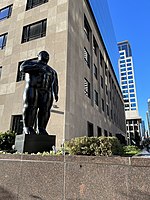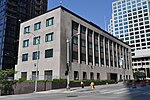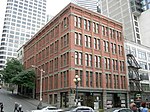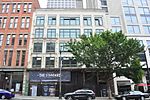1000 Second Avenue
1987 establishments in Washington (state)Downtown SeattleEmporis template using building IDNBBJ buildingsOffice buildings completed in 1987 ... and 1 more
Skyscraper office buildings in Seattle

1000 Second Avenue is a 493 ft (150 m) skyscraper in Seattle, Washington. It was completed in 1987 and has 43 floors. Originally named the Key Tower and the Seattle Trust Tower for its largest tenants, it is the 23rd tallest building in Seattle as of 2021.
Excerpt from the Wikipedia article 1000 Second Avenue (License: CC BY-SA 3.0, Authors, Images).1000 Second Avenue
2nd Avenue, Seattle First Hill
Geographical coordinates (GPS) Address External links Nearby Places Show on map
Geographical coordinates (GPS)
| Latitude | Longitude |
|---|---|
| N 47.605666666667 ° | E -122.33511111111 ° |
Address
1000 Second Avenue
2nd Avenue 1000
98104 Seattle, First Hill
Washington, United States
Open on Google Maps










